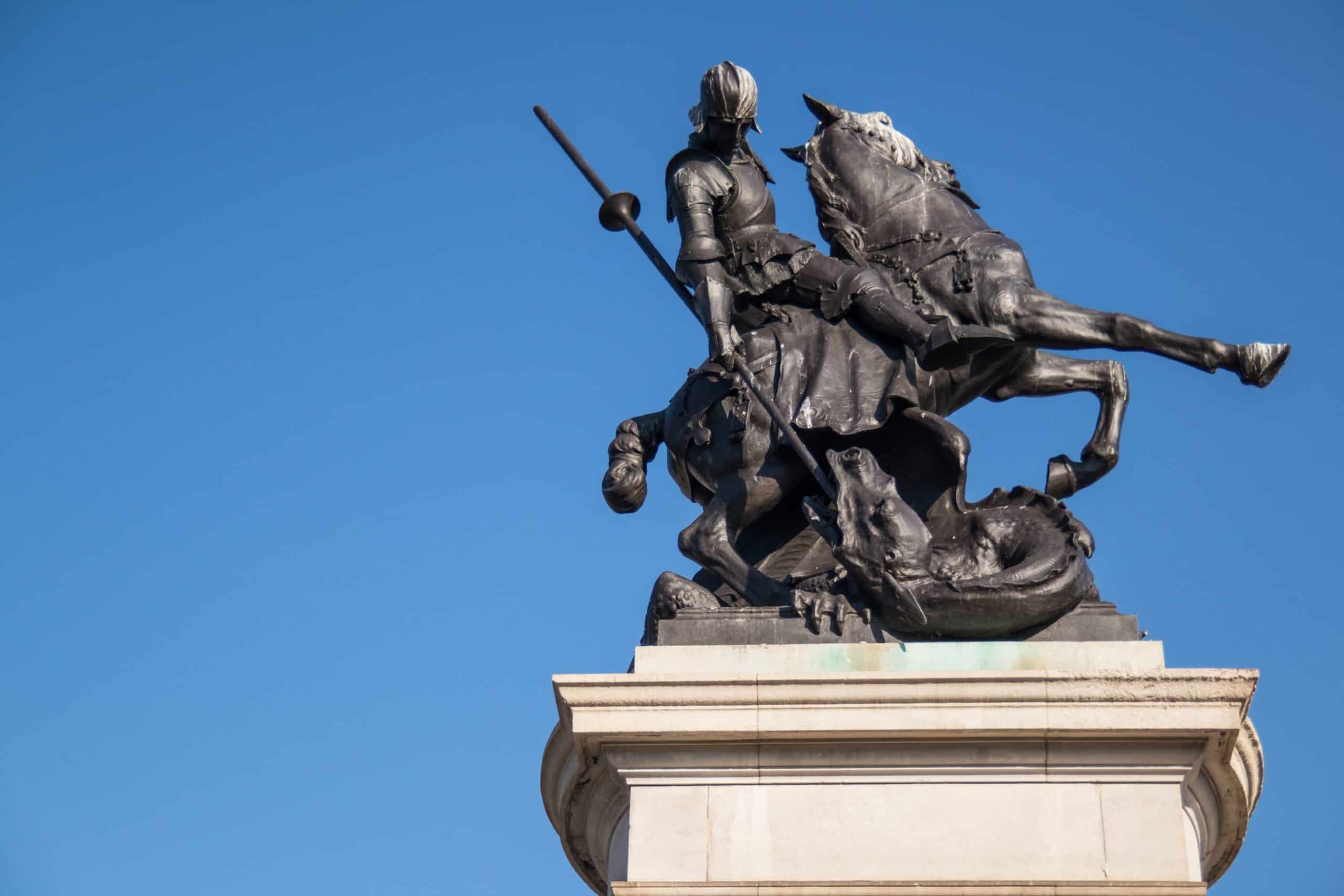
St George is indeed the Patron Saint of England, and we celebrate him on April 23 every year.
The ‘early’ George is believed to have been George of Lydda. He was born in Turkey and a soldier in the Roman army but was sentenced to death in AD 303 for refusing to denounce his Christian faith. His bravery saw him anointed as a saint.
St George, the dragon slayer
During the Crusades, the tale of another St George appeared – a hero of a man who killed a dragon. In 1063 the Normans claimed that St George joined them on a glorious white stallion, wearing shining armour, and bearing a lance and a banner with the St George Cross. It’s a vision that they insisted helped them defeat the rival Muslim army.
As the years went on, further bloody Norman battles ensued and this St George is believed to have made an appearance at many of these too. The result was always a victory for whichever army he appeared for.
Richard 1 uses St George ‘branding’
It wasn’t until the tale of the Martyr Knight was picked up by Richard I that it became legendary. This was mostly thanks to the fact that the King used the St George cross as a banner for his battles. He encouraged future armies to then see St George as protecting them in battle. The St George association was further encouraged by King Edward III.
@BBCCountryfile: “St George’s Day became a national holiday in England in the early 15th century, remaining until the tradition dwindled after the union with Scotland in the late 18th century. Since then, the day has become a rather low-key affair, unlike the Irish celebration of St Patrick’s Day.”
St George ‘on and off’ his horse
Depictions of the triumphant St George have included him sitting atop his horse with the dragon lying dead underneath him. In a 1914 painting by British artist Briton Riviere St George is lying exhausted beside the dragon after being thrown from his horse. George, at this point, was becoming more ‘man’ rather than ‘legend.’
The more realistic portrayal of St George didn’t last long though. The British people needed a hero to help them get through WWI – George was just the job. He became a symbol of British bravery; his image was even used to recruit men to join the ranks of the army.
Today English Heritage celebrates the legend that is St George at Wrest Park where they have a mediaeval-themed St George’s Festival. This year it will take place on April 23 and 24. It promises to be an action-packed weekend of games, performances and activities, before a show-stopping final legendary battle with St George taking on a ‘fiery green nemesis.”
It is agreed that the legend comprises fact intertwined with fiction. But it is a legend that is enduring. Having just said that, St George doesn’t just belong to England. Turkey, Portugal, Germany and Ethiopia have also adopted him as their Patron Saint.
There’s little more English than popping out for a pint of ale and here at The Wyndham we serve a range of beers and ales as well as a selection of spirits and some wonderful wines. So whatever your favorite tipple is, be sure to pop in and see us to celebrate St George’s day!
